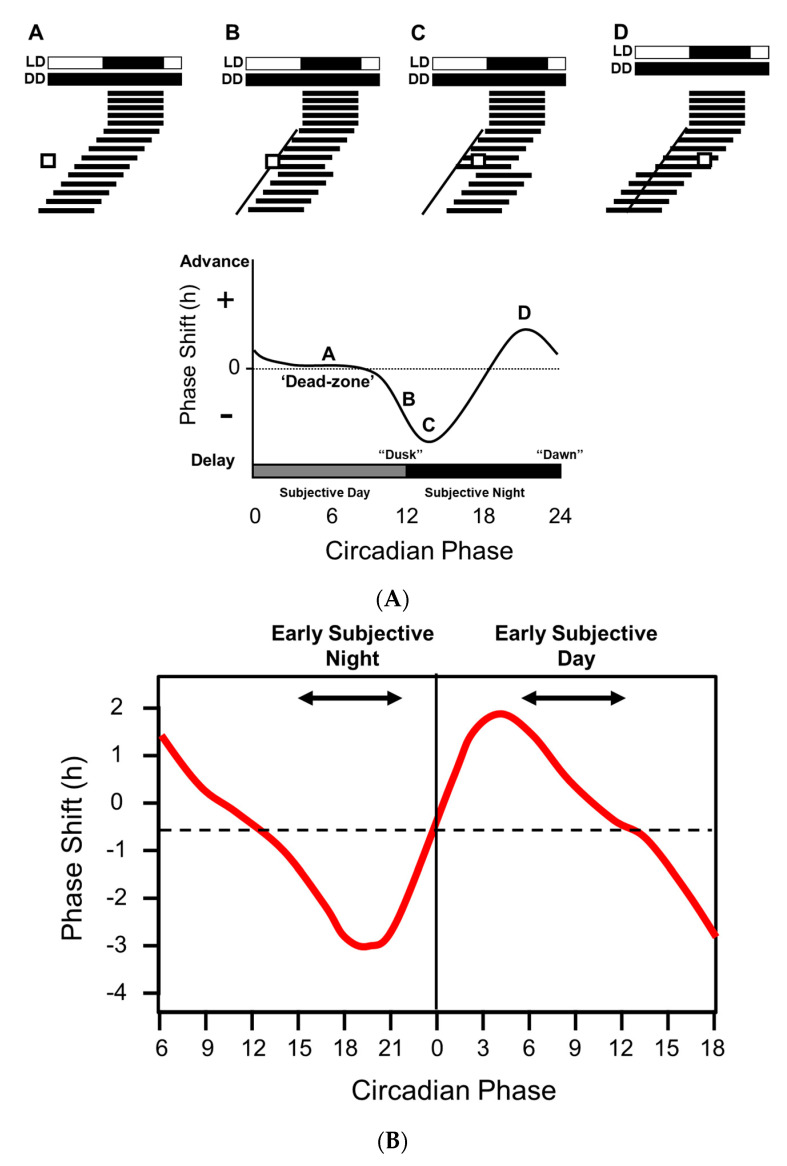Figure 1.
(A): phase response curve (PRC) for a nocturnal animal such as a mouse. In the upper part of this figure (A–D) the light/dark cycle is shown and the dark line illustrates the duration of activity (also called “alpha”) on subsequent days. For the first four days the animal is kept under a light/dark cycle of 12 h of light and 12 h of dark (L:D 12:12). On day 5, the lights were switched off and the animal was kept under constant darkness (DD), and it freeran with a period slightly shorter than 24 h. To provide reference points under freerunning conditions, activity onset in a nocturnal animal is termed “circadian time 12” or CT 12. The CT 0–12 is considered as the “subjective day,” and CT 12–24 is considered “subjective night.” If the animal is exposed to a single one-hour pulse of light during its subjective circadian day, as shown in (A), there is usually no or little phase shifting effect on the freerunning rhythm. This is called the “dead zone.” At (B) the light pulse is given early in the subjective night, the effect is to start activity slightly later the next day (a delaying phase shift). In (C) the light exposure is later into the night and there is an increased delaying effect the following day. When light is given during the second half of the night (D), the effect is to advance the freerunning rhythm. If the phase shifts (A–D) are plotted against the circadian time the result produces a phase response curve (PRC). (B): One version of the human phase response curve (PRC) derived from human subjects [4]. In this figure, phase advances (positive values) and delays (negative values) have been plotted against the timing of light exposure relative to the measured phase of melatonin, which, in humans, is frequently used as a routine measure of circadian phase. The light “pulse” consisted of 6.7 h bright light exposure alternating between 6 min fixed gaze (approximately 10,000 lux) and free gaze (approximately 5000–9000 lux) exposures. Redrawn from Khalsa et.al. 2003. See text for details.

